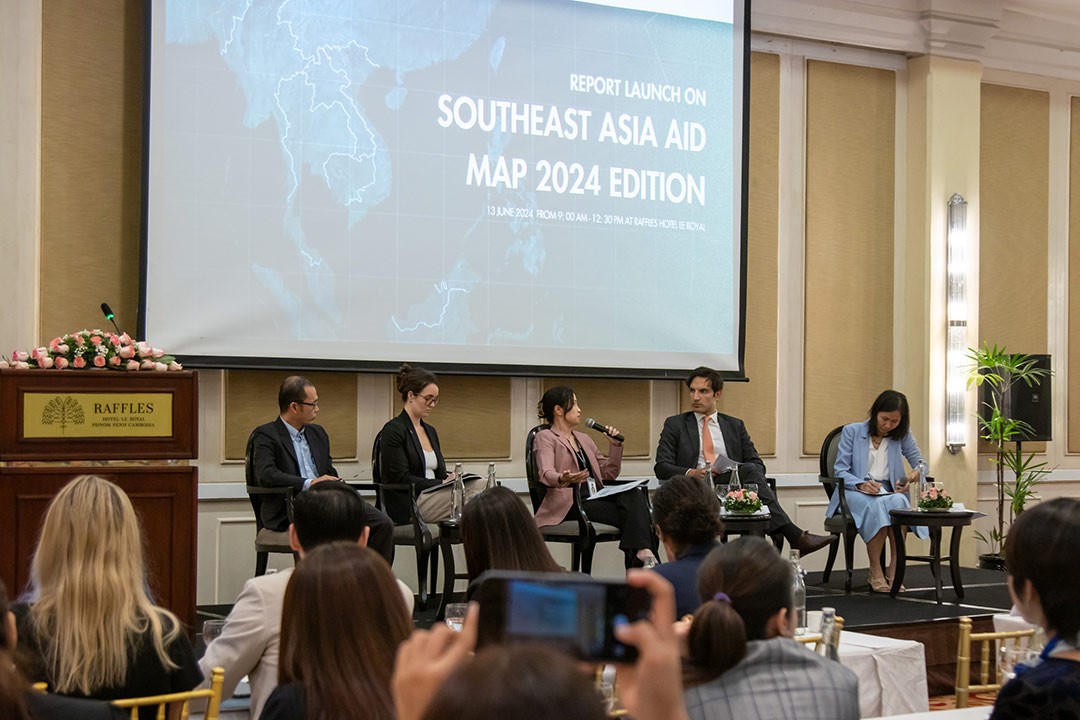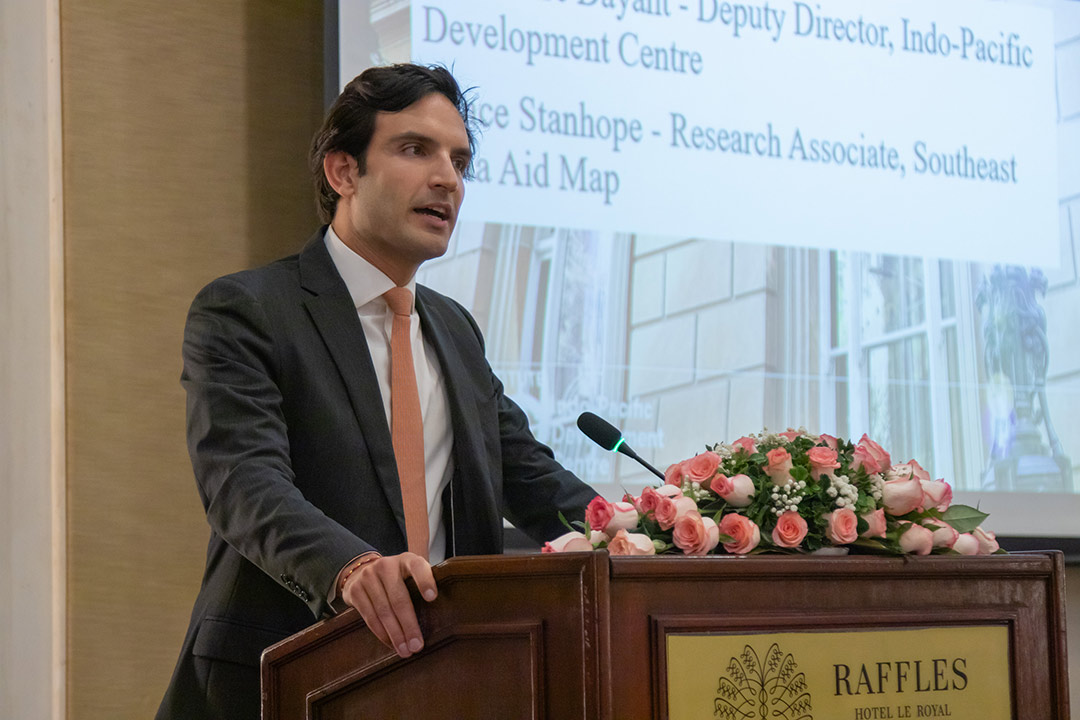Cambodia’s International Development Support Drops To Pre-Pandemic Levels, Despite Risk Of Long-Term Economic Scarring – Southeast Asia Aid Map

A new Lowy Institute report reveals that international partners have sharply reduced development support to Cambodia, even though the country's economy remains fragile and below pre-pandemic levels.
On June 13, 2024, the Cambodia Development Resource Institute (CDRI) and Lowy Institute co-hosted a launch event for the 2024 edition of the Southeast Asia Aid Map at the Raffles Hotel Le Royal.
The launch event was attended by around 100 guests from international development banks and organisations, the government, academia, the private sector and the media.
Key Findings From The Southeast Asia Aid Map 2024 For Cambodia
The annual Southeast Asia Aid Map shows total official development finance (ODF) to Cambodia fell by 30 per cent in 2022 to USD $2.3 billion, in line with the broader regional trend for Southeast Asia.
China provided over a third of Cambodia's development finance from 2015-2022. However, Beijing's development support plummeted to its lowest point in 2022, with little sign of recovery.
However, the Southeast Asia Aid Map shows that regional powers like India, Japan, and Korea have stepped up, suggesting that while Cambodia may not pivot to the traditional West, its pool of development partners could expand.
Other key findings include:
- Traditional development partners collectively continue to dominate total financing, accounting for more than 80 per cent of total ODF disbursements to Southeast Asia in 2022.
- Despite a political premium placed on “ASEAN centrality”, relatively little development support is directed through ASEAN rather than bilateral and other multilateral channels.
- Intra-regional development financing and assistance between ASEAN member states is growing, but from a low base. Thailand does the most (85 per cent), followed by Vietnam (12 per cent).
Alexandre Dayant, Southeast Asia Aid Map project lead at the Lowy Institute, said that “the Southeast Asia Aid Map shows the ongoing importance of official development finance to Cambodia and the region, particularly its role in funding infrastructure, health, education and poverty reduction initiatives."
Therefore, the decline in official development finance to the country is concerning. Chinese financing has plummeted to its lowest level on record in the country, which aligns with a regional trend of Chinese development assistance in the region. Once the primary development partner for half of Southeast Asian countries, Beijing now holds that position only for Malaysia and Laos.

Grace Stanhope, Research Associate at the Lowy Institute Indo–Pacific Development Centre, said that this year’s Southeast Asia Aid Map captures global support for gender equality and women’s rights for the first time.
“The Southeast Asia Aid Map reveals a USD $5 billion increase in gender equality financing in the region from 2015 to 2022,” she said. “But spending on projects where gender equality was the principal focus has declined over the same period."
ASEAN leads much of the work on gender equality advocacy and research across the region. But, unfortunately, funding disbursements through ASEAN have dropped below pre-pandemic levels.
About The Southeast Asia Aid Map
The Southeast Asia Aid Map is a comprehensive database tracking ODF flows in Southeast Asia. The 2024 edition of the Southeast Asia Aid Map compiles millions of data points from 2015 to 2022.
The Map encompasses more than 120,000 projects, by 107 development partners, totalling USD $255 billion, across 11 countries: Brunei, Cambodia, Indonesia, Laos, Malaysia, Myanmar, the Philippines, Singapore, Thailand, Timor-Leste, and Vietnam.
The project aims to increase coordination, improve accountability, and strengthen decision-making and policy debate on aid, development, and geoeconomic competition in the region.
The 2024 Edition of the Southeast Asia Aid Map will be officially launched at 7:30 PM GMT+7 on June 16, 2024 on the Lowy Institute website.
This article was adapted from a supplied press release.